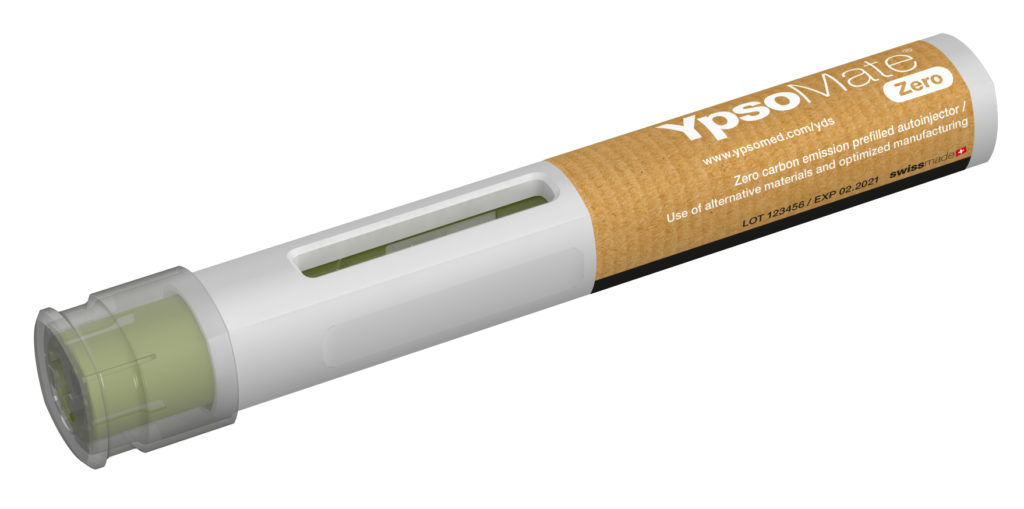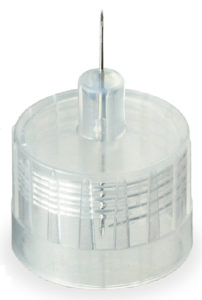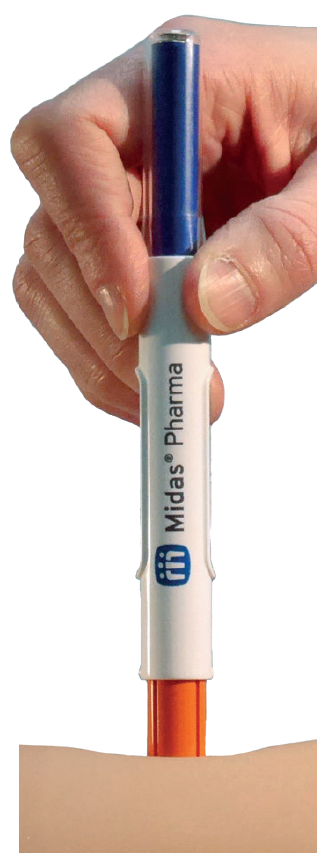Citation: Oakley T, “Top Five Drug Delivery Trends for 2021”. ONdrugDelivery, Issue 117 (Mar 2021), pp 8–10.
Tom Oakley provides an overview of his top five trends to expect in drug delivery in 2021.
Drug delivery devices are evolving rapidly, and Springboard is in the privileged position of being at the centre of development of many of them. Often, we get asked about trends and hot topics in drug delivery device development so, based on our experience, here are our top five trends to watch for in 2021.
THE COVID-19 DIVIDEND
“Many governments have now realised that vaccines are necessary for economic security, if nothing else. They have accepted that they must invest in vaccines at risk, and sometimes in advance, to ensure that research, development and supply are possible.”
Among all of the disruption, confinement and loss caused by covid-19, there have been some unexpected positive effects on human life.
The business case for vaccine development was difficult before covid-19; it takes years of development with all the failure risks common to drug development, and the financial return can be limited because each patient might receive only one or two doses during their life, or, at most, once per year. Compare that with chronic diseases, such as diabetes, where each patient receives multiple doses per day.
However, many governments have now realised that vaccines are necessary for economic security, if nothing else. They have accepted that they must invest in vaccines at risk, and sometimes in advance, to ensure that research, development and supply are possible. It seems inconceivable that governments and philanthropic funds will stop vaccine funding in the near future.
We should also expect to see strong investment from both public and private funds in autoimmune drugs (the first drugs known to help treat severe covid-19), diagnostics, critical care infrastructure and personal protective equipment.
REDUCED ENVIRONMENTAL IMPACT
The pharmaceutical and medical device industries have long prioritised safety, efficacy, regulatory compliance, usability and economics when developing drugs and devices. In addition to these, we have seen a marked increase in the importance of reducing environmental impact in new device developments.
Part of this is driven by corporate environmental goals. Springboard has worked on multiple projects to reduce environmental impact, for example:
- Assessing the CO2 equivalent of metered dose inhalers compared with dry powder inhalers and soft mist inhalers
- Working out better global supply chains to reduce air miles and other carbon-intensive operations
- Designing devices to be reusable, or to have significant reusable subassemblies
- Reducing the mass of plastic used.
Device manufacturers have started working on concepts in this area too, such as the YpsoMate Zero (Ypsomed, Burgdorf, Switzerland) (Figure 1).

Figure 1: Ypsomed’s YpsoMate Zero autoinjector.
CONNECTED DEVICES
“Springboard has been developing connected drug delivery devices for its clients, some of which have new abilities that have not yet been seen on the market.”
Connected devices have been the darling of conferences in recent years and are a big area of development – all of the main pharma companies and drug delivery device manufacturers are working on them.
The general technological hurdles have been overcome and the first connected drug delivery devices have reached the market, such as the Bayer (Leverkusen, Germany) BETACONNECT.
Springboard has been developing connected drug delivery devices for its clients, some of which have new abilities that have not yet been seen on the market. The most interesting new capabilities are confidential, but Springboard can confirm that there are devices under development with:
- Remote control of the drug delivery (both a customisable delay before start of delivery, and dose rate profile during delivery)
- Complex dose regimes from more than one drug container, or even more than one delivery device
- Connection with diagnostics. A well-known example is the combination of an insulin pump with a continuous glucose monitor, but diagnostics can be useful for indications other than diabetes.
The biggest remaining risks and challenges around connected drug delivery devices are:1
- Expecting connectivity itself to solve adherence: Connectivity is unlikely to make all patients adherent, but has great potential in enabling support and training to be focused on those who need it most.
- Usability: Adding features and functions can be confusing and increase risks.
- Affecting critical functions: Where possible, devices should function safely and effectively, even if the connected features fail.
- Cybersecurity: We have seen exploits on insulin pumps and infusion systems. Devices and systems must have high security to maintain the confidence of users, regulators and clinicians.
- Data silos: Proprietary systems will tend to lock data into separate, incompatible silos, but there are various campaigns to increase interoperability.
- Regulatory change: The first connected drug delivery devices have been approved, but, as a new area, we can expect changes and evolution of requirements and interpretations.
- Environmental impact: Adding electronics to devices can increase environmental impact but this can be minimised by making them reusable, long-lasting and recyclable.
- Business models: Expecting the patient to pay directly for connectivity is unlikely to be successful for many therapies. However, innovative business models, which involve pay-per-results (for which connectivity provides the evidence of adherence), are being rolled-out.
NASAL INHALATION
Nasal inhalation remains an area of active research, particularly for delivery of:
- Central nervous system (CNS) drugs to cross the blood-brain barrier
- Biologics, particularly peptides.
The main attractions of the nasal inhalation option are the potential to cross the blood-brain barrier, faster absorption and greater molecule survivability than in the gastrointestinal tract, and the avoidance of needles.
Various projects are underway for the delivery of drugs to the CNS, including the treatment of epilepsy, schizophrenia and pain management. Recently, there has been an increase in interest in nasal delivery of established molecules, such as ketamine and cannabinoids, which potentially have a faster route to market than new chemical entities.
The nasal route for delivery of biologics has already been proven for peptides to treat numerous conditions, such as osteoporosis, haemophilia and vitamin B12 deficiency. Larger proteins remain a challenge due to the limited permeability of the nasal mucosa relative to the rate of mucociliary clearance.
Springboard has substantial experience in how to design drug containers and delivery devices to work without damaging sensitive biologics.
ULTRA-SMALL NEEDLES

Figure 2: Terumo’s Nanopass 34G pen needle for the subcutaneous injection of drugs.
Needles are generally disliked by patients, but the drug delivery industry has struggled to move to non-needle methods. Oral delivery of biologics, such as insulin, is making progress with various clinical trials underway, but many candidates have failed over the years. Needle-free injectors seem to have fallen out of favour, perhaps because they tend to involve high-pressure or high-velocity jets, which mean loud noises and risk of bruising and pain. Therefore, there is a great deal of focus on ultra-small needles.
Terumo (Tokyo, Japan) has its tapered needles, for which the tip goes down to 34G.2 The Nanopass 34G pen needle is intended for use with a pen injector device for the subcutaneous injection of drugs, including insulin (Figure 2). Becton, Dickinson and Company (NJ, US) and other companies are making extra-thin wall and ultra-thin wall needles available in more formats, such as in staked needle syringes.
The length of ultra-small needles is limited, due to both manufacturing constraints and risk of bending in use, but this is being addressed by clinical investigations into the possibility of shallower injections, and in optimising the grip of the needle in the device or syringe. Thin needles also increase the pressure required to inject in a reasonable time – see this example of the design of a powerful autoinjector.3
2021 will see continued, and probably increased, effort into achieving injection with ultra-small needles without requiring very high injection pressure. The NIS 3 mL autoinjector from Midas Pharma (Ingelheim, Germany) is a cartridge-based autoinjector. The two-step device can be easily modified to become the first “one-step” autoinjector on the market (Figure 3).

Figure 3: Midas Pharma’s 3 mL
NIS autoinjector.
SUMMARY
We have touched on five areas of drug delivery work that we believe will be important in 2021. There are, of course, many others that did not make the list.
In most years, the trends tend to be dominated by improving the experience and outcomes for individual patients, which is entirely appropriate and encouraging. On the other hand, we see one trend this year – reduced environmental impact – which is intended to improve outcomes for society and the wider environment, rather than the individual patient. One could argue that preparation for, and protection against, pandemics is similar, in that it may be driven more by the benefit for wider society (and the national economy) than for the individual patient. Perhaps we will see more focus on such trends in the future.
REFERENCES
- Oakley T “Risks and Real-World Solutions for Connected Medical Devices”. ONdrugDelivery Magazine, Issue 108 (June 2020), pp 16–20.
- “Nanopass® 34G Needle for Pen Injectors”. Terumo website.
- Oakley T, “Development of a New High-Performance Autoinjector”. Company Web Page, Springboard, April 3, 2020.
Previous article
PLATFORM TRAINING SOLUTIONS ADD VALUE FOR PHARMACEUTICAL COMPANIESNext article
ROOM FOR INNOVATION?
